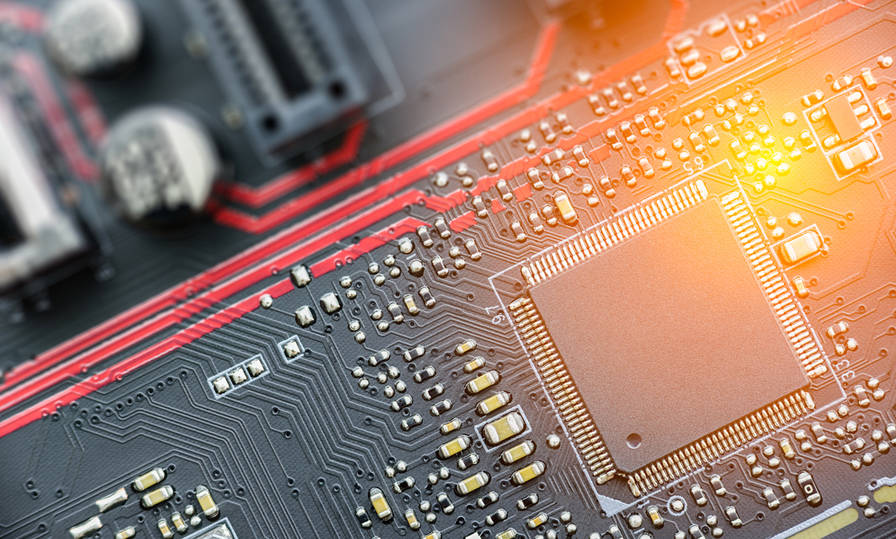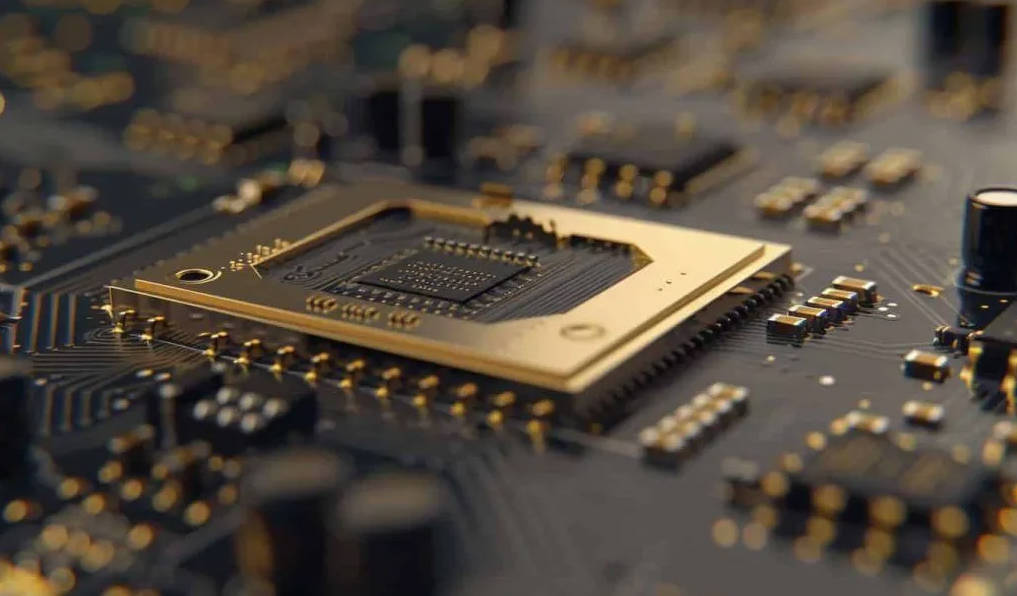Table of Contents
- 2. What is FR4?
- 3. What is a Metal-Core PCB?
- 4. Key Differences Between Metal-Core PCBs and FR4
- 5. When Should You Choose Metal-Core PCBs Over FR4?
- 6. Common Questions from Metal-Core PCB Users
- 7. Conclusion
In the intricate world of electronics, the Printed Circuit Board (PCB) serves as the foundational skeleton, holding all components together and providing the necessary electrical pathways. While its primary function is often seen as electrical, the material it’s built from, known as the substrate, plays an equally critical role in a device’s long-term performance and reliability. As components become smaller and more powerful, generating significant amounts of heat in confined spaces, the ability of the PCB to manage this thermal load has become a paramount concern for designers and engineers.
Historically, the industry standard has been the FR4 PCB, a versatile and cost-effective solution for a vast range of applications. However, its limitations in thermal conductivity are becoming increasingly apparent with the rise of high-power density applications. This has paved the way for a new generation of circuit boards: the metal core PCB. Unlike traditional boards, a metal core PCB is engineered specifically for superior thermal performance, leveraging a metal base to efficiently dissipate heat away from critical components. Metal-Core PCBs (MCPCBs) offer far superior thermal conductivity compared to FR4, making them the preferred choice for high-power and LED applications. This is because they use a metallic substrate to act as a heat sink, effectively moving heat away from sensitive components and preventing damage or performance degradation.
This article will delve into a detailed comparison of these two fundamental PCB types, focusing on their thermal management capabilities and other key characteristics. We will explore the structure, properties, and applications of both FR4 and metal core PCBs to help you understand when to choose one over the other.
2. What is FR4?
FR4 stands as the backbone of the electronics industry, a ubiquitous material that has enabled the mass production of countless devices. At its core, FR4 is a composite material made from woven fiberglass cloth infused with an epoxy resin binder. This combination results in a rigid, flame-retardant laminate that provides a stable and electrically insulating base for electronic components. The “FR” in its name signifies “flame retardant,” a crucial safety feature.
While FR4 excels in providing a solid mechanical and electrical foundation, its thermal properties are a significant limitation. It has a very low thermal conductivity, typically around 0.3 W/mK. This means that FR4 is an excellent insulator, which is great for keeping electrical signals separate but terrible for moving heat away from hot components. In low-power circuits, this isn’t an issue, as the small amount of heat generated can be dissipated through other means. However, as power requirements increase, this low thermal conductivity can lead to hot spots and component degradation.
Due to its low cost and reliable performance for low-to-medium power applications, FR4 is the material of choice for everyday consumer electronics. From your television’s mainboard to the circuit boards in your remote control, FR4 is everywhere. It’s a general-purpose workhorse, perfect for designs where heat generation is not a primary concern. However, for applications that push the boundaries of power density, such as high-power LEDs or automotive systems, its thermal limitations necessitate a more advanced solution.
3. What is a Metal-Core PCB?
A Metal-Core PCB (MCPCB) represents a significant leap in circuit board technology, specifically designed to address the thermal challenges that overwhelm traditional FR4. Unlike an FR4 board, an MCPCB has a unique, multi-layered structure. At its foundation is a metal plate, typically made of aluminum or copper. This metal base acts as a highly efficient heat sink, drawing heat away from the components and dissipating it into the environment. Above the metal core lies a thin, specialized dielectric layer, which is both electrically insulating and thermally conductive. This layer is crucial; it prevents the copper circuit layer from short-circuiting with the metal core while still allowing heat to pass through freely. On top of this is the copper circuit layer, where the electronic components are mounted and connected, just like on a standard PCB.
The primary advantage of an MCPCB is its exceptional thermal conductivity, which can range from 1 to 5 W/mK or even higher, a monumental improvement over FR4’s 0.3 W/mK. This superior thermal performance is the main reason why metal core PCBs are the go-to choice for high-power applications. For example, an aluminum metal core pcb is a popular and cost-effective option for LED lighting, while a copper-core PCB offers even higher thermal conductivity for the most demanding applications. Due to their robust heat dissipation capabilities, MCPCBs are essential for a variety of critical applications. These include LED lighting, power electronics like converters and regulators, and automotive systems where reliability under varying thermal conditions is non-negotiable. They are also used in RF devices and other high-power circuits where effective thermal management is the key to both performance and longevity.
4. Key Differences Between Metal-Core PCBs and FR4
The choice between a metal core pcb and a traditional FR4 board boils down to a fundamental trade-off between thermal performance, cost, and mechanical properties.
- Thermal Conductivity: This is the most significant differentiator. FR4 is an electrical insulator with very low thermal conductivity, typically around 0.3 W/mK. In contrast, MCPCBs are designed for high thermal dissipation with a thermal conductivity range of 1-5 W/mK or higher.
- Heat Management & Reliability: Effective heat management directly translates to device reliability and lifespan. MCPCBs excel in this area by preventing hotspots and maintaining stable operating temperatures, which extends the lifespan of components. FR4 boards, on the other hand, pose a risk of overheating in high-power circuits, which can lead to premature component failure or a complete system shutdown.
- Mechanical Properties: An aluminum metal core pcb or copper core pcb is rigid and strong, offering better dimensional stability. FR4 boards are more flexible and have a lower weight, making them suitable for lightweight consumer electronics.
- Electrical Performance: Both board types offer good electrical performance, but MCPCBs often have a higher dielectric strength and it is easier to achieve controlled impedance with them. FR4 boards are generally good for all-purpose PCBs and are sufficient for most electrical requirements in consumer devices.
- Cost Considerations: FR4 holds a distinct advantage in cost. The material and manufacturing costs for FR4 boards are significantly lower than those for MCPCBs. While the initial cost of an MCPCB is higher, the long-term reliability and performance gains often justify the investment, especially in mission-critical applications.
- Application Suitability: FR4 is the standard for everyday consumer electronics. MCPCBs are essential for applications with high heat generation, such as LED lighting, power supplies, automotive systems, and aerospace and telecom equipment.
Here is a summary table of the key differences:
| Feature | FR4 | Metal-Core PCB |
|---|---|---|
| Thermal Conductivity | Low (~0.3 W/mK) | High (1-5 W/mK+) |
| Heat Management | Limited performance, risk of overheating | High dissipation, prevents hotspots |
| Mechanical Properties | More flexible, lower weight | Rigid, strong, better dimensional stability |
| Cost | Lower material and manufacturing cost | Higher cost |
| Primary Applications | Consumer electronics, low-to-medium power circuits | LED lighting, power electronics, automotive, RF devices |
5. When Should You Choose Metal-Core PCBs Over FR4?
The decision to opt for an MCPCB over a traditional FR4 board is driven by the specific demands of your application, particularly concerning heat generation and long-term reliability. While FR4 is perfectly suitable for a vast array of general-purpose electronics, there are key scenarios where its thermal limitations simply make it inadequate.
You should choose Metal-Core PCBs when your design involves high heat generation, such as in LED lighting, automotive electronics, and power modules, where FR4 cannot provide adequate thermal management. The most common applications that demand the superior thermal properties of MCPCBs include:
- High-power LED modules: LEDs are highly efficient, but the small semiconductor junction still produces significant heat. Without a way to effectively dissipate this heat, the LED’s light output will decrease and its lifespan will be drastically shortened. An aluminum metal core pcb is the industry standard for LED lighting because it acts as a built-in heat sink.
- Power supplies & converters: Devices that convert or regulate electrical power generate a substantial amount of heat. MCPCBs ensure these components operate within a safe temperature range, preventing thermal runaway and extending the life of the power supply.
- Automotive lighting & control units: Cars are subject to extreme temperature fluctuations. A metal core pcb provides the thermal stability and mechanical robustness needed to ensure headlights, engine control units, and other critical systems function reliably in harsh environments.
- RF power amplifiers: In telecommunications and broadcasting, RF amplifiers generate a significant amount of heat. Using an MCPCB is essential for maintaining consistent performance and preventing frequency drift due to temperature changes.
- Devices requiring long-term thermal stability: Any application where performance cannot degrade over time due to heat, such as in aerospace or industrial machinery, is a prime candidate for an MCPCB.
While the upfront metal core pcb price may be higher, the investment is justified by the enhanced performance, improved reliability, and extended component lifespan. For a project with high heat generation, a traditional FR4 board is a gamble that can lead to costly failures down the line.
6. Common Questions from Metal-Core PCB Users
As more designers and engineers transition from FR4 to MCPCBs, several common questions arise, reflecting the need for a deeper understanding of this specialized technology.
- Can MCPCBs completely replace FR4? While MCPCBs offer superior thermal performance, they are not a universal replacement for FR4. FR4’s lower cost and established manufacturing processes make it the ideal choice for applications where thermal management is not a critical concern. MCPCBs are a specialized tool for high-power applications, not a one-size-fits-all solution.
- What are the design limitations of MCPCBs? One of the primary design limitations of MCPCBs is their single-sided or double-sided structure, particularly for single-layer versions. The presence of the metal core also affects routing and component placement, as it acts as a permanent ground plane and heat sink. Additionally, the dielectric layer is very thin, which requires precise manufacturing to ensure both electrical insulation and thermal conductivity.
- Are aluminum-core PCBs better than copper-core? The choice between an aluminum metal core pcb and a copper-core PCB depends on the application’s specific requirements. Aluminum is the most common and cost-effective option, offering excellent thermal conductivity and a lightweight design, making it ideal for most LED lighting and power electronics. Copper-core PCBs, on the other hand, offer even higher thermal conductivity and are more robust, but they are also heavier and significantly more expensive. They are typically reserved for extremely high-power applications, such as high-frequency RF power amplifiers, where maximum heat dissipation is paramount.
- How does MCPCB thickness affect thermal performance? The thickness of the metal core and the dielectric layer both play a role in thermal performance. A thicker metal core can dissipate more heat, but it also increases the board’s overall weight and cost. A thinner dielectric layer offers lower thermal resistance, allowing heat to transfer more efficiently, but also reduces the dielectric strength, which could be a concern for high-voltage applications.
7. Conclusion
The debate between Metal-Core PCBs and FR4 is not about one being inherently “better” than the other; rather, it’s about choosing the right tool for the job. FR4 has long been the industry’s reliable workhorse, providing a cost-effective and dependable platform for countless electronic devices, particularly those with low to medium power requirements. Its low thermal conductivity, however, makes it ill-suited for the heat-intensive applications that dominate modern technology.
This is where the metal core pcb emerges as a game-changer. With a thermal conductivity that can be an order of magnitude higher than FR4, MCPCBs provide an essential solution for managing the immense heat generated by high-power components. By preventing hotspots and ensuring stable operating temperatures, MCPCBs significantly extend the lifespan and enhance the reliability of critical devices in LED lighting, power electronics, and automotive systems. The higher initial metal core pcb price is often a small trade-off for the long-term performance and durability they provide.
In summary, the choice between these two substrates is a strategic decision that impacts not only a product’s performance but also its long-term viability. While FR4 remains the standard for everyday electronics, the future of high-power and high-reliability devices will increasingly rely on the superior thermal management capabilities of the metal core pcb. For designs pushing the boundaries of power and miniaturization, partnering with a knowledgeable metal core pcb supplier is crucial to ensure that your thermal management strategy is as robust as your electrical design.



